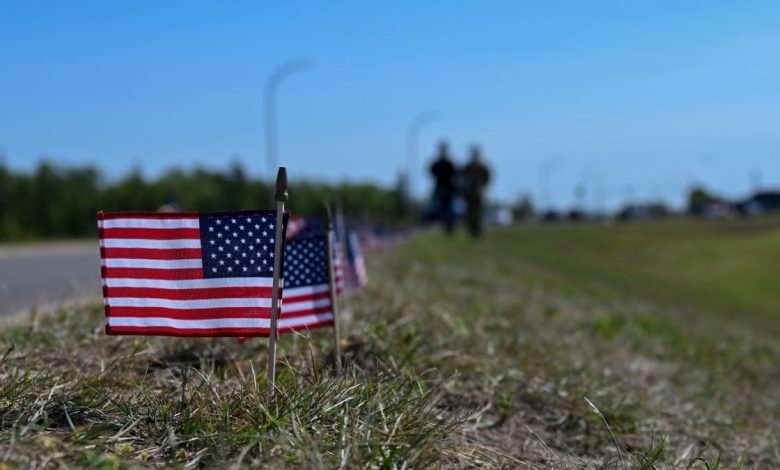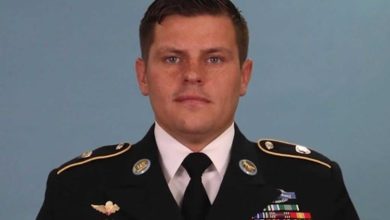Why the military’s approach to its suicide epidemic is failing

Editor’s note: This report contains discussion of suicide. Troops, veterans and family members experiencing suicidal thoughts can call the 24-hour Suicide and Crisis Lifeline at 988 and dial 1, text 838255 or visit VeteransCrisisLine.net.
This week, the Department of Defense released their 2023 suicide data, showing that active-duty suicides rose from 331 in 2022 to 363 in 2023. In a Military Times article about the increase, a Pentagon spokesperson sought to downplay the report and stated that the increase is not “statistically significant.”
It is difficult to find words to describe how outrageous, disgusting and inappropriate such a response is — particularly in the face of a suicide epidemic that has grown across the U.S. military over the past decade.
This epidemic continues despite the expenditure of hundreds of millions of dollars on prevention programs, awareness initiatives and various other efforts. And it’s happening within an institution that prides itself on leadership, discipline, strength and resolve.
The simple truth is this: What the Defense Department is doing to prevent suicide is not working. If we want to truly address the problem of military suicide, a comprehensive rethinking is required.
RELATED
Implementing emotional intelligence training in the military can significantly support suicide prevention by fostering a culture of awareness and empathy. The first step is to integrate emotional intelligence into the existing training and leadership continuum, beginning in basic training.
Recruits should be taught to recognize and manage their emotions, which can help reduce impulsive behavior and stress during crises. Additionally, leaders at all levels must be trained to identify emotional distress in their subordinates, engage in active listening and offer support and resources.
Cultivating an environment where emotional intelligence is valued can foster trust and teach soldiers to seek help before reaching a crisis point. This means creating training modules that teach service members how to recognize their own emotional struggles, how to identify signs of burnout and how to access mental health resources before issues escalate.
Rather than solely focusing on “toughening up,” military training should incorporate emotional intelligence and strategies for managing stress, anger, depression, anxiety and grief.
While mental health and public health experts bring valuable knowledge to suicide prevention, it’s essential to reconsider their dominant role in leadership positions. These experts focus on clinical or policy-driven approaches, which overlook the lived experiences and social contexts that contribute to suicidal ideation.
Effective suicide prevention requires a broader, more holistic approach that incorporates diverse perspectives, including those from individuals with lived experience, community leaders and those affected by systemic issues like poverty, discrimination and isolation.
Individuals who understand the complexities of suicide prevention beyond clinical frameworks can create more effective, empathetic and comprehensive solutions that resonate with at-risk populations.
We must stop comparing the public to the military regarding suicide because the experiences, pressures and environments of military personnel are fundamentally different than those of their civilian counterparts.
Military service members face unique stressors, such as combat exposure, deployments and a highly structured, high-risk environment, which can have profound psychological effects.
The stigma surrounding mental health in the military, combined with intense demands, often leads to delayed help-seeking behaviors and increased suicide risk.
In contrast, while civilians face their own challenges, their daily lives generally lack the extreme pressures, trauma and consequences of military service.
Comparing the two groups oversimplifies the issue and ignores the specific needs and circumstances of military personnel. Suicide prevention efforts must be tailored to the distinct realities of military life.
I am also convinced that our language around suicide prevention is a key factor in our inability to reach our military recruiting goals.
The term “resilience” has, unfortunately, become a four-letter word in the military lexicon, with the focus on resiliency more of a buzzword than an actionable strategy.
Most people don’t even know what the word means. At its core, resilience means “to bounce back.” Unfortunately, the military has expanded this definition to mean resistance to trauma. This is just not true.
Replacing resiliency with something akin to “mental toughness” or “navigating adversity” should be a priority. After all, service members are expected to operate under extreme conditions. They are asked to endure physical and emotional hardships in service to their country, and the military prides itself on producing men and women who can navigate adversity.
But when the concept of resilience becomes a blanket expectation rather than a practical support system, it risks doing more harm than good.
Ultimately, fixing the military suicide epidemic requires a new approach — one that redefines leadership, revamps training and fosters an environment of openness and mutual support.
Only then will we begin to reverse the devastating trend of military suicides and create a system that truly supports the men and women who serve our country.
The military is known for its leadership, discipline and strength. I hope our next defense secretary will realize that our current approach is not working. The time to act is now, before more lives are lost.
Ken Falke is founder and chairman of Boulder Crest Foundation, and is the author of “Struggle Well, Thriving in the Aftermath of Trauma.”
Read the full article here






